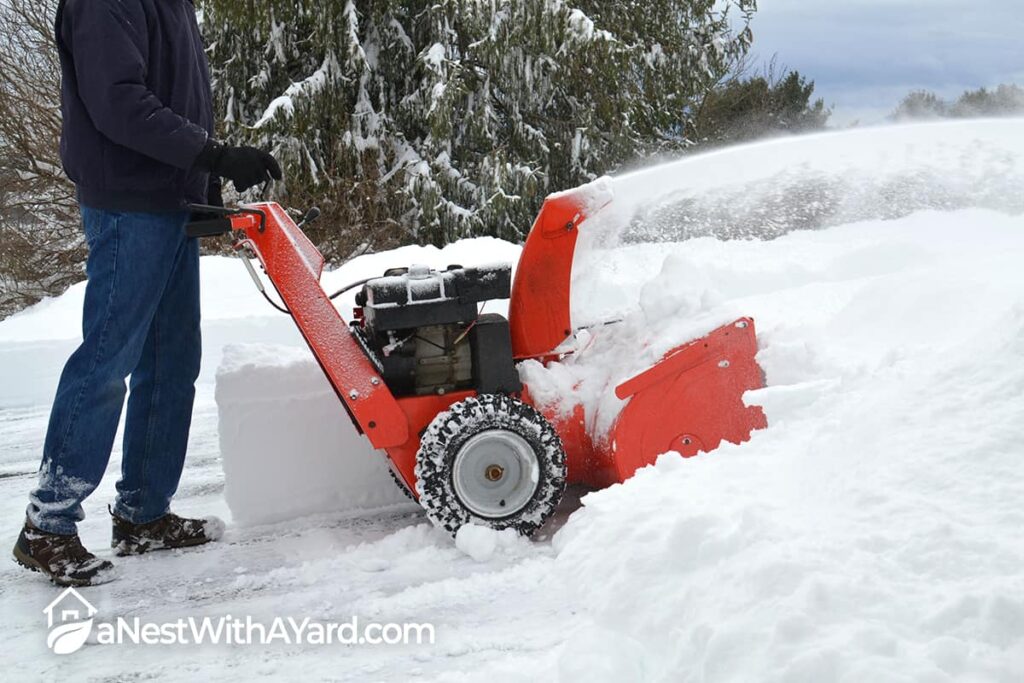Winter is just around the corner, and with it comes the inevitable task of clearing snow from our driveways and walkways. But have you ever wondered how long your trusty snowblower will last? In this article, we explore the fascinating world of snowblowers and uncover the secrets behind their life expectancy. From maintenance tips to signs it’s time for a replacement, we’ve got you covered. So grab a cup of hot cocoa, sit back, and let’s uncover the mysteries of the snowblower’s lifespan together.
What Is The Life Expectancy Of A Snowblower?
When investing in a snowblower, it is important to consider its life expectancy. After all, you want to make sure that your purchase will last for many winters to come. The life expectancy of a snowblower can vary depending on several factors. In this article, we will explore these factors and provide tips on how to prolong the life expectancy of your snowblower.
Factors Affecting the Life Expectancy of a Snowblower
- Build Quality:
The build quality of a snowblower plays a significant role in determining its life expectancy. Snowblowers made with durable materials and sturdy construction are likely to last longer compared to those made with lower-quality materials. When purchasing a snowblower, it is advisable to research the brand’s reputation for producing high-quality and long-lasting products.
- Frequency and Extent of Use:
The more frequently and extensively a snowblower is used, the shorter its life expectancy may be. Snowblowers that are used daily or for large areas are more prone to wear and tear. If you live in an area with heavy snowfall or frequently experience blizzards, you may need to replace your snowblower more often.
- Maintenance and Care:
Proper maintenance and care are crucial for extending the life of your snowblower. Regularly cleaning your snowblower after each use, checking and replacing any worn-out parts, and following the manufacturer’s maintenance instructions can significantly increase its longevity. Neglecting maintenance tasks can lead to premature breakdowns and decrease the overall lifespan of the snowblower.
- Climate and Weather Conditions:
The climate and weather conditions in your region can impact the life expectancy of a snowblower. Snowblowers used in areas with consistently heavy snowfall and low temperatures may experience more strain and wear. Extreme weather conditions, such as freezing cold or heavy wet snow, can put additional stress on the snowblower’s components and reduce its lifespan.
- Brand and Model:
The brand and model of the snowblower are important factors to consider when estimating its life expectancy. Different brands have varying levels of build quality, durability, and performance. It is recommended to research and choose a reputable brand known for producing reliable and long-lasting snowblowers.
- Age of the Snowblower:
Like any mechanical device, the age of a snowblower can affect its life expectancy. Older snowblowers may have outdated technology, which can lead to more frequent breakdowns and difficulties in finding replacement parts. While proper maintenance can prolong the life of an older snowblower, it is important to consider the age and condition of the machine before expecting it to perform optimally.

This image is property of suaveyards.com.
Signs It’s Time to Replace Your Snowblower
- Frequent Breakdowns and Repairs:
If your snowblower frequently experiences breakdowns and requires extensive repairs, it may be a sign that its life expectancy is coming to an end. Constantly investing in repairs can be more costly in the long run than purchasing a new snowblower.
- Decreased Performance:
If your snowblower is no longer clearing snow effectively or struggles to start, it may be indicating that its life expectancy is diminishing. Reduced performance and decreased efficiency are signs that the machine is wearing out and may need replacement.
- Unavailability of Replacement Parts:
As snowblowers age, it may become increasingly challenging to find replacement parts, especially for discontinued models. If your snowblower needs a crucial part that is no longer available, it may be time to consider replacing the machine altogether.
- Obsolete Technology:
Advancements in technology have led to more efficient and user-friendly snowblowers. If your snowblower lacks features that are now standard in newer models, such as electric start or adjustable chute control, it may be worth upgrading to a more modern machine.

This image is property of anestwithayard.com.
How to Prolong the Life Expectancy of Your Snowblower
Now that we have discussed the factors that affect the life expectancy of a snowblower and the signs indicating the need for replacement, let’s explore some strategies to prolong the lifespan of your snowblower:
- Follow the Manufacturer’s Maintenance Instructions:
The manufacturer provides specific maintenance instructions for each snowblower model. It is essential to read and follow these instructions carefully. Regularly change the oil, inspect the spark plug, lubricate moving parts, and clean the snowblower after each use according to the manufacturer’s recommendations.
- Store the Snowblower Properly:
When the winter season comes to an end, it is crucial to store your snowblower correctly. Drain the fuel tank or use a fuel stabilizer to prevent the fuel from deteriorating. Clean the machine thoroughly and store it in a dry and protected area to avoid rust and damage. Proper storage will help maintain the snowblower’s performance and extend its life expectancy.
- Use the Snowblower Correctly:
Using the snowblower correctly can prevent unnecessary strain and damage. Clear snow in smaller increments rather than trying to move large piles at once. Slowly guide the snowblower forward, allowing the machine to do the work at its own pace. Avoid forcing the snowblower or pushing it beyond its capacity, as it can result in premature wear and tear.
- Keep the Snowblower Clean:
Regular cleaning is essential to remove snow, ice, and debris that can accumulate while using the snowblower. After each use, clear any remaining snow and ice from the machine’s chute, augers, and impeller. Use a soft brush or cloth to remove any debris, and ensure that the snowblower is completely dry before storing it.
- Regularly Check and Replace Parts:
Inspecting and maintaining the various parts of your snowblower is crucial for its longevity. Periodically check the belts, augers, spark plug, and other components for wear and tear. Replace any damaged or worn-out parts promptly to prevent further damage and maintain optimum performance.
- Be Mindful of Fuel:
Using the correct fuel mixture and quality fuel is essential for the proper functioning of your snowblower. Always use fresh fuel and follow the manufacturer’s recommendations regarding fuel type and octane rating. Avoid using stale or contaminated fuel as it can cause engine problems and reduce the life expectancy of the snowblower.

This image is property of sp-ao.shortpixel.ai.
Conclusion
The life expectancy of a snowblower depends on various factors, including build quality, frequency of use, maintenance, climate conditions, brand, model, and age. By considering these factors and following the tips mentioned in this article, you can ensure that your snowblower lasts for many seasons. Regular maintenance, proper usage, and care will help maximize the life expectancy of your snowblower and ensure that it remains reliable when you need it most.

This image is property of suaveyards.com.
